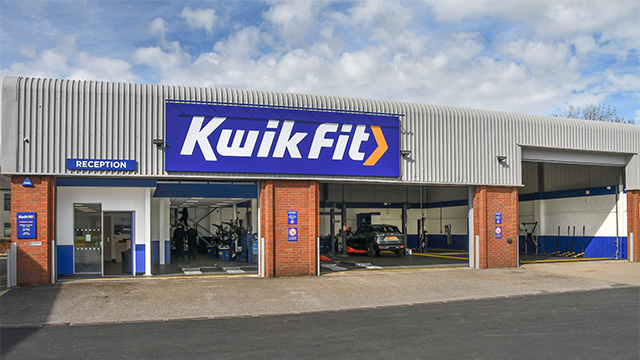A spate of lettings during 2010 raised hopes that a severe oversupply of large speculatively-built sheds in South Yorkshire would be soaked up. But the market went quiet in the final quarter of the year, and 2011 looks uncertain.
According to Gerald Eve research, there was a combined total of 2.5m sq ft of take-up of 50,000 sq ft-plus buildings in the second and third quarters of 2010 – an increase of 316% on the same period in 2009. Major lettings included 530,000 sq ft to online fashion retailer ASOS at ProLogis’s Crossflow 530 in Barnsley, and 415,000 sq ft to Amazon at Firstpoint in Doncaster.
But there were no such deals in Q4, when take-up was only 110,000 sq ft. So far this year, the largest letting has been 122,500 sq ft to Next at West Moor Park in Doncaster in January, although, on the bright side, Q1 take-up of 620,000 sq ft was 20% higher than the same period last year.
Roger Haworth, director at CB Richard Ellis, says: “The first quarter of this year was quite slow, but it was the same last year. It was only in Q2 that the market really kicked off.”
Jones Lang LaSalle’s Dave Robinson adds: “So as long as businesses are sound, there is no reason for occupiers not to take space.”
Spare capacity
According to Gerald Eve, the availability of buildings above 50,000 sq ft dropped by 37.4% to 12.5m sq ft between Q1 2010 and Q1 2011, but there are still many vacant sheds. Knight Frank’s Rebecca Schofield estimates that there is 2m sq ft of speculatively-built space available in units of more than 100,000 sq ft.
However, she believes the region will benefit from shortages of stock in the East Midlands. “South Yorkshire can attract more footloose distribution enquiries simply because it has the standing stock,” she says.
Those with existing buildings are reporting good interest. Philip Hollister, chairman of JF Finnegan, which completed the 152,000 sq ft Magna 34 unit in Rotherham in 2009, says: “We have had significant viewings in the past two to three months, and now have offers out to two parties.”
Similarly, Standard Life Investments fund manager Nigel Chapman insists there has been an “uptick in interest” over the past two months for two units of 277,000 sq ft and 246,000 sq ft at Firstpoint.
Speaking about demand, GVA director Rob Oliver adds: “The bulk of the retail enquiries have been satisfied, but we have seen an increase in enquiries from logistics companies in the past six to nine months.”
Agents note an increase in demand from manufacturers, including CME Sanitary Systems and railway equipment maker Pandrol.
Some of this demand has translated into deals. St Paul’s Developments signed up tool manufacturer Cutting & Wear for a 38,000 sq ft presale in January at Smithy Wood Business Park near Sheffield, and engineering firm Thetford for an 83,000 sq ft prelet in April at Brookfields near Rotherham.
Shortage of mid-sized units
In contrast to the market for big sheds, there is little space to cater for mid-sized requirements. St Paul’s Developments director David Newton believes that bespoke prelet buildings will become the norm.
“Although there are plenty of large distribution units around, there really isn’t anything between 30,000-100,000 sq ft,” he says.
Savills director David Aspland reports that there are several enquiries that have not been satisfied. “We recently had a requirement for 60,000 sq ft in the Sheffield area, but could find nothing suitable,” he says.
Despite the continued glut of large sheds, agents are keen to point out that there are limited sites with planning consent for 400,000 sq ft-plus units. One exception is Gazeley’s G Park Doncaster, which was launched in February and can provide up to 1.5m sq ft of space with units up to 665,000 sq ft.
Below that size band, though, there is more choice for occupiers. In Sheffield, for example, Sladen Estates’ SIRFT 3 could accommodate a 283,000 sq ft unit.
According to Knight Frank, prime rents for large sheds are stable at £4.25-4.50 per sq ft. However, CBRE’s Haworth says that incentives of 12 months for every five years of a lease on existing buildings would be reduced by two-thirds if the available space disappears and occupiers have to look for prelets. The market might have a way to go before that happens, however.
Rolls-Royce rolls into Sheffield
Sheffield’s reputation as a manufacturing hub could be enhanced by Rolls-Royce’s choice of the Advanced Manufacturing Park on the Sheffield/Rotherham border as its preferred location for two factories totalling 320,000 sq ft.
The company, which completed a public consultation in April on facilities to make turbine blades for jet engines and components for power stations, was due to submit a planning application as EG went to press.
Lambert Smith Hampton director Guy Gilfillan says: “This is very significant and will build on a diverse manufacturing base covering sectors such as oil and gas, automotive and nuclear energy.”
He believes that companies involved in the Rolls-Royce supply chain will locate nearby. The 100-acre AMP, which counts as occupiers Boeing, Dormer Tools and Rolls-Royce itself, would have 20 acres left if the company’s new facilities are built. Occupier attention could also focus on Sheffield Business Park, which has 600,000 sq ft of buildings, but could accommodate a further 900,000 sq ft.
Shaun O’Brien, general manager of investment property at Harworth Estates – joint owner of AMP with outgoing regional development agency Yorkshire Forward – says: “Sheffield Business Park would hopefully be able to pick up any surplus requirements.”
Other possibilities in Sheffield are Smithy Wood, which has 30 acres left to develop, and the 15-acre Woodhouse Link, which has planning consent for five units totalling 196,000 sq ft.











